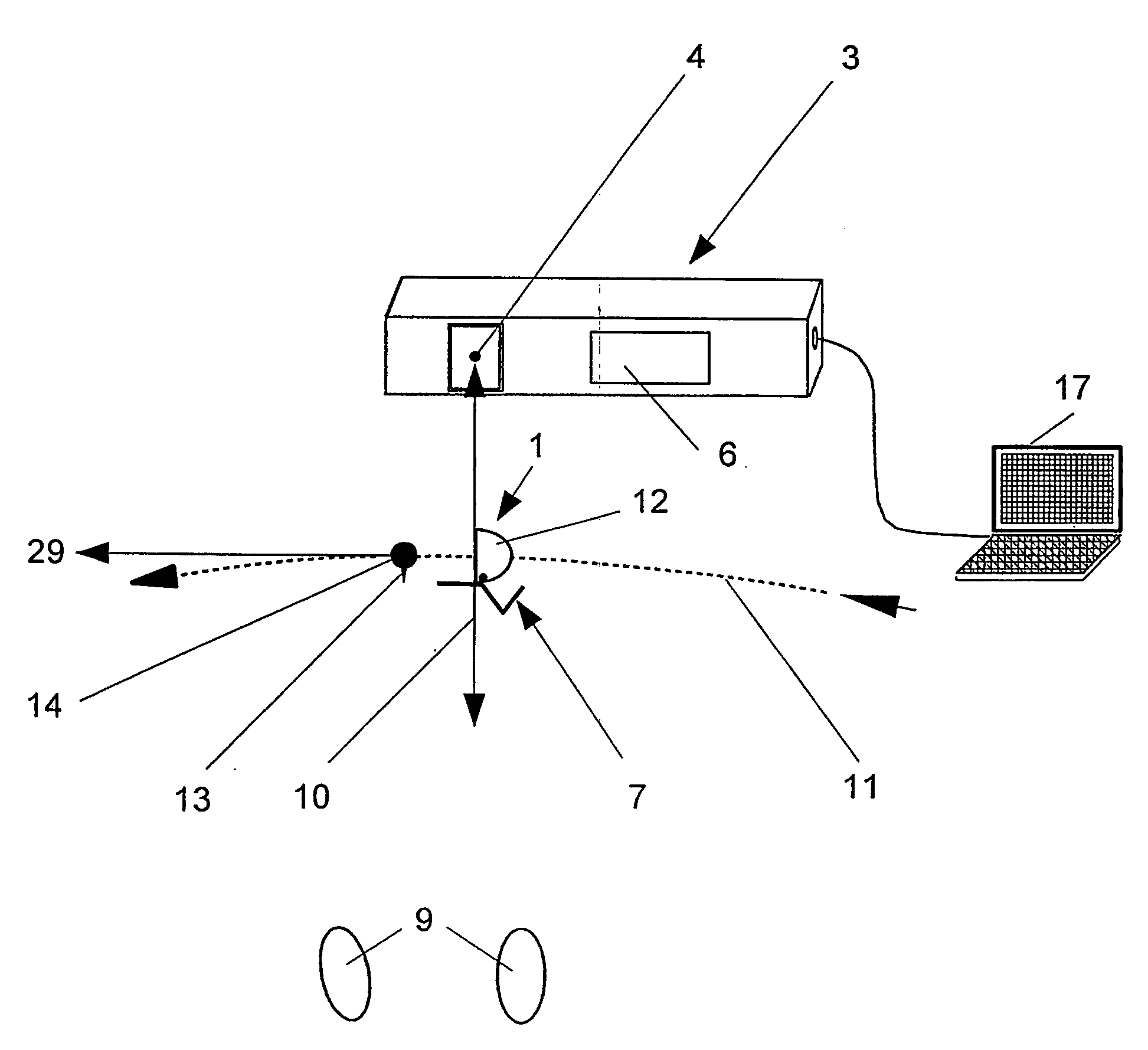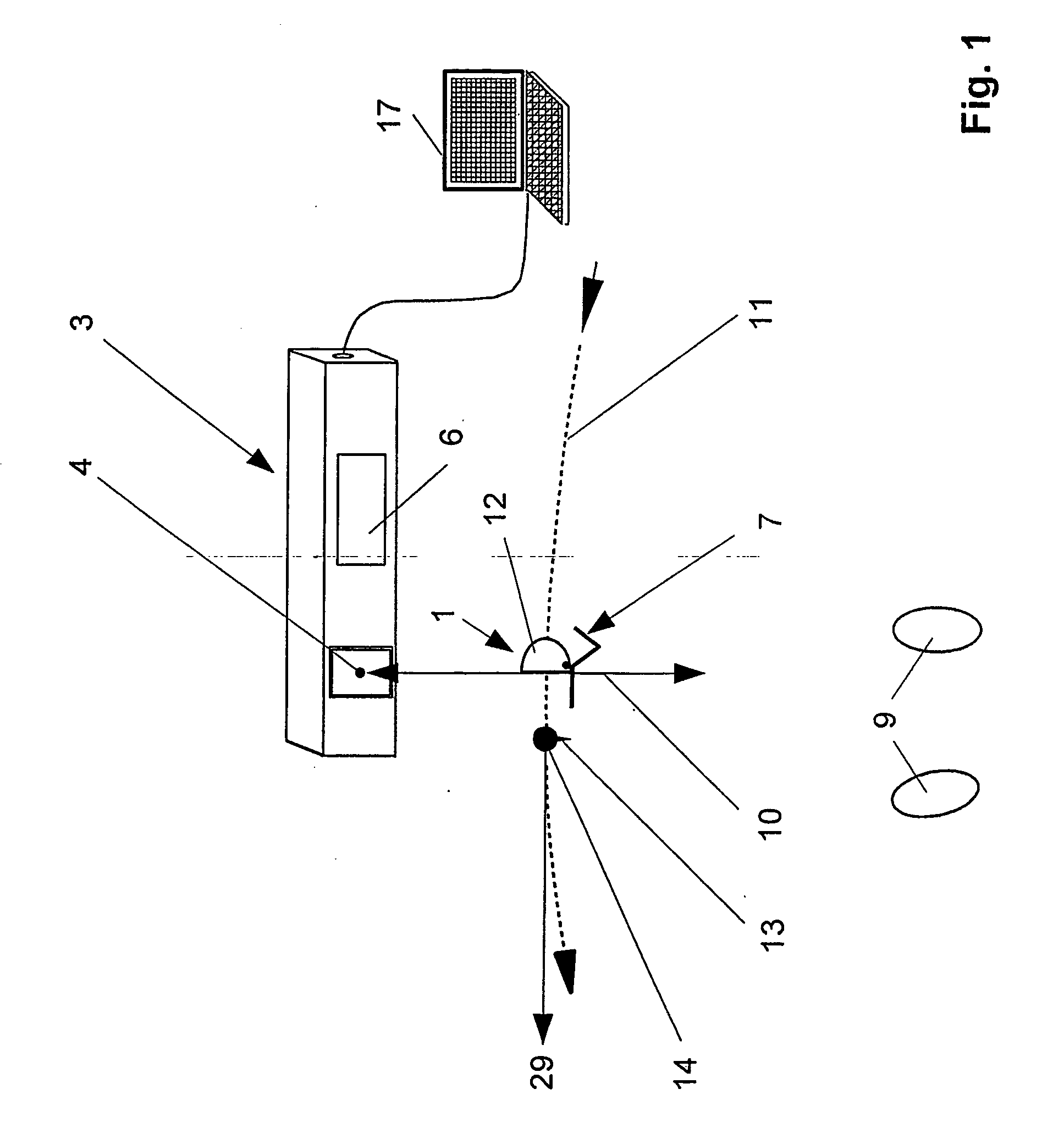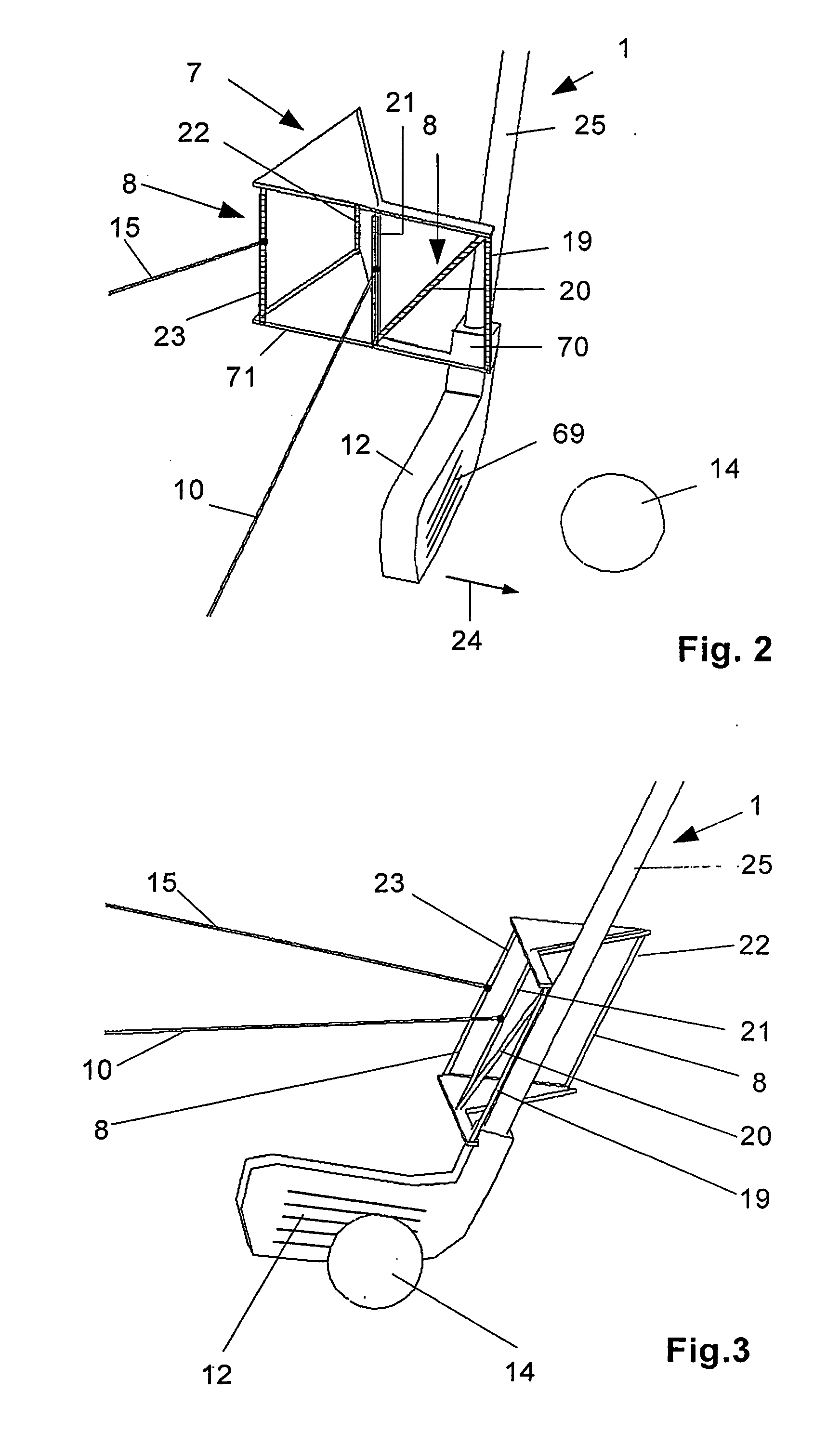In principle, this is a robust measurement method, but it is a
disadvantage that the (
infrared-)
light source constitutes an annoyance in the view field of the player.
Further, the detectors in the playing surface are prone to
contamination and / or to damaging by the club head.
A further
disadvantage is the requirement of a special golf mat for the measurements.
However, this method does not solely use clearly defined times of beam interruption, but the natural ambient light and analog signals that represent the degree of shadowing effects on particular diffusor disks during the passage of the club head.
Thereby the analysis becomes difficult and is particularly problematic where the ambient
light intensity varies quickly.
With this method very precise results may be achieved, but in practice it shows some severe disadvantages:1. A mirror has to be arranged and exactly aligned between the player and the tee.2. Another exactly aligned mirror must be attached to the club head which may be damaged in cases of imprecise ball contact.
The
assembly is so bulky, that practice may just be possible in fixed cabins.
The hitting parameters are not determined in this way, the measurement setup is not qualified for that purpose.
A further
disadvantage is the liability of the measurement to faults by the use of ball-shaped reflectors which necessitate the use of special filters.
The setup is not suited to determine the hitting parameters.
Since the
radar transceiver is arranged behind the
golf ball in the heading direction of the ball flight, there is always some risk that badly struck golf balls may hit and damage the
radar unit after
takeoff.
However, putting with a
golf ball is precluded during this kind of training, else the mirror would be damaged.
Although an embodiment is mentioned, in which the mirror is offset laterally to allow for putting a golf ball, such a setup is not suited for full swings, be it with or without ball.
The great number of
infrared reflective light barriers makes the proposed
system expensive.
Further, the current needed alone for the
infrared emitters sums up to significantly more than 3 A, which impedes battery-based operation.
Such a setup is damageable by too lowly accomplished swings, particularly because the position and adjustment of all light barriers is essential for their aforementioned function.
A good
temporal resolution of the proposed design can only be expected if the club head passes the mat at low distance.
Else the
aperture angle of the sensors is likely to produce strong time-
jitter of the output signals, which renders the measurement imprecise or useless.
The necessarily short working distance causes another problem.
This necessitates expensive special designs (standard sensor approx.
1000 ), which in addition are exposed to the risk of damage by the club head.
A disadvantageous feature of this setup is the position of the
laser source near the feet of the player, which constitutes a dangerous stumbling block.
Further, the applied, vertically pointing
laser fans are either severely restricted in their
power density or they can lead to
irritation or even damage to the eyes in the vicinity of the orifice of the
laser source.
USB cameras are inexpensive, indeed, but they offer bad frame rates (
consumer type
USB-cameras today 80 fps at maximum) and cannot be synchronized to the stages of the swing.
Such an
image analysis is extensive, expensive and coarsely rasterized.
Another disadvantage of this kind of analyzer is further, that to the golf ball reflective dots have to be attached, which might get damaged at each
stroke.
Further, it is not possible to play without golf ball with such a measuring setup.
 Login to View More
Login to View More  Login to View More
Login to View More 


